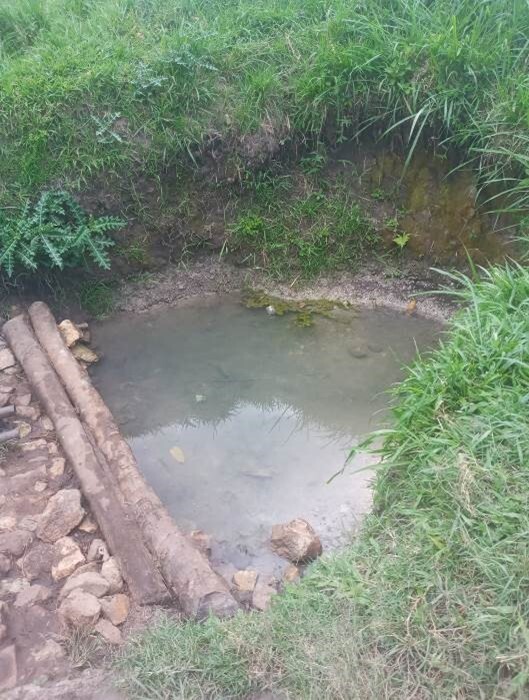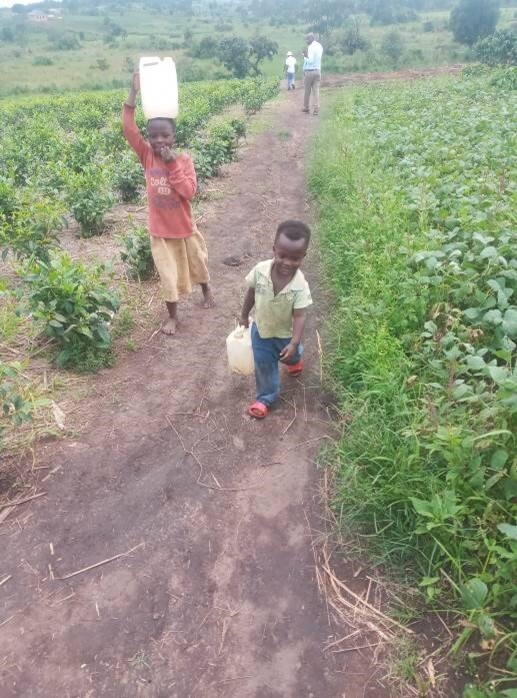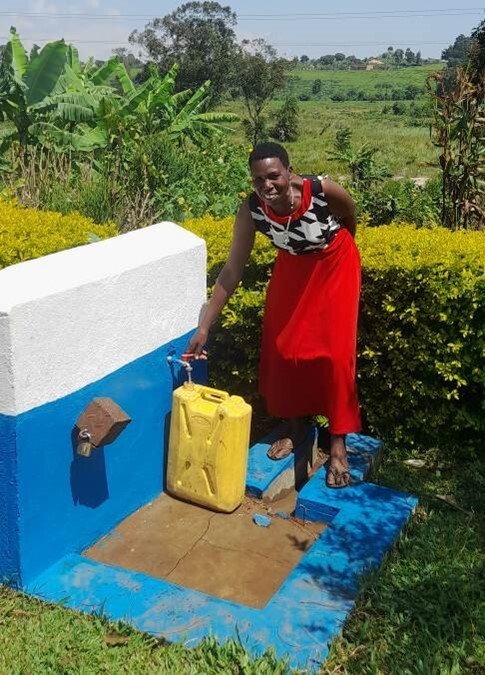
How a public-private partnership has helped Kabarole extend safe water supply to the most unserved areas
Published on: 14/11/2023
For many years, most people in Kabende struggled without access to safe water with the majority having to trek long distances to fetch dirty water from River Sogahi while others resorted to worse options such as irrigation channels.
Kabende Subcounty is one of the fourteen sub-counties in Kabarole District, Western Uganda. Located about 45 km north of Fort Portal City, Kabende is the remotest subcounty in the district. Situated at the edge of the rift valley, the area is characterised by unreliable groundwater sources and the only available surface water is the heavily polluted River Sogahi down in the valley.

Kabarole District acted by prioritising safe water supply to Kabende and set aside UGX 163,000,000 (approximately USD 44,000) towards this initiative. Several options including the use of groundwater and supply of water from River Sogahi were considered but proved to be too expensive both in the initial development as well as operation and maintenance due to the area’s poor groundwater potential, treatment, and supply of water from River Sogahi also proved The exorbitant costs of treating such heavily polluted water and pumping it to the altitude where people live would make the unit cost of the service unaffordable for the people of Kabende.
Indeed, the initiative to supply safe water to Kabende seemed untenable when Kabarole District realised that they needed to mobilise more resources and look for a more sustainable approach. The district approached the National Water and Sewerage Corporation (NWSC) which already had a piped water supply network in the nearby subcounty. The district also presented to IRC a request for financial support. Ideally, NWSC does not serve rural areas but given the circumstances with no viable alternative, this became the only option, and thankfully NWSC accepted.
IRC also agreed to make an initial contribution of UGX 22 million, (approx. 6,000 USD). But even after pooling all the available resources from all three partners, the need was still much bigger than what the available resources and IRC proposed a phased approach: the Kabende water supply intervention would be phased over several years with an emphasis on multiyear intervention focused on reaching 100% coverage.
Since 2019, four phases of safe water piped networks have so far been extended from the NWSC supply to Kijura Town Council with a total of over 10 km in length. This has increased access to safe water from 35% to over 60%. The most recent extensions in 2023 were to the villages of Kivakado and Mubali.

From the onset, Kabarole DLG, NWSC, and IRC as partners understood the magnitude of the challenge and knew that no individual institution would have achieved it alone. It was also clear to all three partners that postponing the intervention to such a time when they had all the resources was not an option. They agreed to start with what was available and phase the implementation over several years until the sub-county is covered 100%.
With the right buy-in from the community leadership, they leveraged the strength of each institution as follows:
For the first 2 phases of extensions, funds were transferred to NWSC who would then use their internal technical capacity to design and implement the extensions. This was based on their strong internal capacities as well as vast experience in doing similar work.
It was later observed that implementation experienced big delays caused by internal bureaucracies at NWSC. This majorly affected the timely access to funds due to NWSC’s centralised management model. Kabarole District then officially requested IRC to handle the funds for the subsequent extensions and directly procure a contractor to carry out the extensions. This has been done in two phases and has worked very well.
The observed changes include:
This collaboration has worked effectively and has promoted collective accountability and joint decision-making by leveraging the strengths of all three partners. This initiative has caused an increase of 30% in the safe water supply coverage in Kabende with an investment of UGX 367,600,000, approximately USD 100,000.

This initiative is a true demonstration of the power of partnerships. From the way this partnership has been implemented, below are some notable learnings:
With the partnership growing from strength to strength, there is now more confidence that it is possible to cover Kabende 100% over the next few years, clearly illustrating that indeed we can achieve more with less if we embrace the spirit of collective action.
The writer is a Water and Environmental Engineer and WASH programme coordinator at IRC Uganda.
This blog is the writer’s product after participating in the WASH storytelling write shop, organised for regional partners, and facilitated by IRC Uganda as one of the in-country learning and documentation commitments under the One For All alliance. See link for more information.
At IRC we have strong opinions and we value honest and frank discussion, so you won't be surprised to hear that not all the opinions on this site represent our official policy.